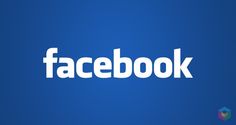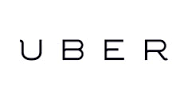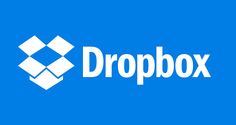
Every early-stage startup is bootstrapped growing their business with little or no VC funding. Once the startup picks up, business operations and resources expand and the startup will need funding to manage the operations and the whereabouts. This means that the startup founders must have a better understanding of different stages in startup funding.
To cite, in a previous blog – Creative ways to seed fund your app idea, we looked at why and when tech startups choose to raise funds and explored four major types of fundraising: crowdfunding, angel investors, venture firms, and IPOs.
Applying that now let’s take a look at the different stages of startup funding and get into details of how much money startups might seek at each stage.
SEED FUNDING
Seed funds are raised during the early stages of a startup. Investors contribute a small amount of money to bring an idea to life. The immediate goal is to produce a minimum viable product.
Seed capital often comes from the company founders’ personal assets, from their friends and family, and sometimes from angel investors. Professional investors and banks see this as a very risky investment. If they do invest, professional investors may seek a considerable equity stake, as they are accepting a high amount of risk.
Seed funding is mainly used for preliminary market research and to develop the minimum viable product. It may also be used for initial marketing of your product to test your market and gain some traction.
Funding range: $50,000 – $1,000,000
- Facebook’s first ads (May 2004) only generated approx. $2,400 in ad revenue. By June 2004, they raised a $500,000 which resulted in angel investor Peter Thiel agreeing to invest $5,000,000 into the project. This money was initially structured as a loan, the financing was later converted to a 10.2% equity stake in the company for Peter Thiel.
SERIES A FUNDING
The next step is usually getting a working product into the market and Series-A funding is the first round of institutional Venture capital funding once an idea has reached this stage.
The name refers to the Series-A preferred stock offered to the investors in exchange for their equity.
Typically, these funds are used for the first two years of operating costs, including software development, server maintenance, marketing, and other business operational costs.
Funding range: $2,000,000 to $10,000,000, in exchange for 10% – 30% stake of the company.
- In 2010, AirBnB raised $7,200,000 from Sequoia Capital and Greylock Partners. At that time, over 700,000 nights had been booked on Airbnb, in more than 8,000 cities. The press release stated, “AirBnB will use their millions to continue global expansion, hire staff, make translated versions of the app and create multiple payment options to suit any lister or booker, no matter what country they’re in.”
SERIES B FUNDING
The second round of funding takes place after the company has proven success with Series-A. In most cases, the company is already making decent revenue in this round.
Commonly, Series B funds are used to expand the team and for scaling the business. It may include salaries, infrastructure costs such as server costs and office space, and may also include marketing and branding costs needed to enter a new region to achieve globalization.
Funding range: $5,000,000 – $50,000,000
- In 2013, Snapchat raised $80,000,000 in Series B funding led by venture firm IVP (Institutional Venture Partners).
SERIES C FUNDING
Series C funding is the third round of funding for companies which have already proved successful in the market and have clear potential for a larger market. The purpose is to accelerate growth. Product diversification, acquisition, and tapping into the international markets are often the main focus points. Big banks, hedge funds, and public companies are involved at this stage, as the amount can be in hundreds of millions of dollars.
Funding range: $100,000,000– $500,000,000
- In 2013, Uber raised $258,000,000, led by Google ventures. This Series C funding put Uber at a post-money valuation of $3.7 billion.
The funding amount and purpose of funding for each round shown above are approximations; it varies based on the company. The number of funding rounds is also not limited to Series A, B, and C; that depends on the growth of the organization. For instance, Pinterest, founded in 2009, has accumulated $1.3 billion in funding. Their latest round, in 2015, was a Series G, which raised $186,000,000.
FUNDRAISING HISTORIES OF SUCCESSFUL STARTUPS

| Angel | $500,000 | Peter Thiel Reid Hoffman |
| Series A | $12,700,000 | Accel Partners |
| Series B | $27,500,000 | Founders Fund Greylock Partners Meritech Capital PartnersSV Angel |
| Series C | $240,000,000 | Microsoft |
Facebook had four rounds of Series C funding and accumulated over $200,000,000 in funding before going public.

| Seed Funding | $200,000 | Garrett Camp, founder Travis Kalanick, founder |
| Angel | $1,250,000 | First Round |
| Series A | $11,000,000 | Benchmark |
| Series B | $37,000,000 | Manlo Ventures |
| Series C | $258,000,000 | Google Ventures |
Uber used several rounds of funding to sustain its expansion. The latest funding from Baidu garnered 1,200,000,000 U.S. dollars in private equity, taking the total funding to over $10,000,000,000 by 2015, far exceeding the amounts raised by any company before in IPO.

| Seed Funding | $620,000 | Y Combinator Sequoia Capital |
| Series A | $7,200,000 | Eight different Venture firms and investors |
| Series B | $112,000,000 | Andreessen Horowitz |
| Series C | $200,000,000 | Founders Fund |
Airbnb saw more rounds of funding totalling $2.39 billion by 2015. The latest funding, by Firstmark Capital, accumulated $100,000,000 (private equity).

| Seed Funding | $250,000 | Five friends of Brian Acton, co-founder |
| Series A | $8,000,000 | Sequoia Capital |
| Series B | $50,000,000 | Sequoia Capital |
Whatsapp did not have any more rounds of funding. However, on February 19th, 2014, Facebook acquired Whatsapp for a reported $19 billion.

| Seed Funding | A $10,000 credit card | Founders |
| Secondary market | $60,000,000 | Accel Partners |
| Secondary market | $150,000,000 | T. Rowe Price |
Atlassian, founded in Sydney, Australia, raised $462,000,000 with its IPO on the U.S. NASDAQ exchange.

| Seed Funding | $15,000 + $1,200,000 | Y Combinator + seven investors |
| Series A | $6,000,000 | Sequoia Capital |
| Series B | $250,000,000 | Index Ventures |
| Series C | $350,000,000 | BlackRock |

| Series A | $21,640,000 | Horizons Ventures Northzone Creandum Li Ka-Shing |
| Series B | $50,000,000 | Wellington Partners Li Ka-Shing Horizons ventures |
| Series C | $12,598,180 | Founders Fund (Sean Parker) |
| Series D | $100,000,000 | Accel Partners Klieners Perkins Caufield & DST Global |
Spotify received further rounds of funding from investors. On June, 2015, Spotify received $526,000,000 from a total of 13 investors, taking its total funding to $1.06 billion.
Conclusion
We hope you found this article helpful and we believe that if you are an app startup entrepreneur it is important to know the different stages of startup funding. This not only will help you raise capital for your startup in time but helps in planning out the entire funding process for your startup.
You might also be interested in reading the article on top five things that investors look when investing in a tech startup.
back to the Blog